
Year Round Birds of Grouse Mountain
Posted by Devin Manky April 10, 2018
Today for National Wildlife Week let's look at some of the common birds found on Grouse Mountain! The birds here can be seen on most trips up the mountain - regardless of season. Watch for them on your next trip up!
The Bald Eagle (Haliaeetus leucocephalus) is a common sight on Grouse Mountain. Watch for them on your trip up our skyride and then soaring in the air above our mountaintop plateau. The striking white head (no they aren't actually bald) is a feature that lets you know it is an adult bird - did you know it takes them up to five years to fully develop their white head and tail? Bald Eagles mate for life and often build large nests over the years. There are some nests nearby to Grouse Mountain and we often see the young, fully dark coloured, birds out practicing flying and hunting each spring. The Bald Eagle call is a warbling high pitched cry - nothing like what you might think. On TV and in movies it is often dubbed over with Red-tailed Hawk calls which sound a lot more fierce! The Bald Eagles inhabiting Grouse Mountain are often out hunting prey such as Snowshoe Hare, Sooty Grouse, Douglas Squirrel and smaller mice and voles.
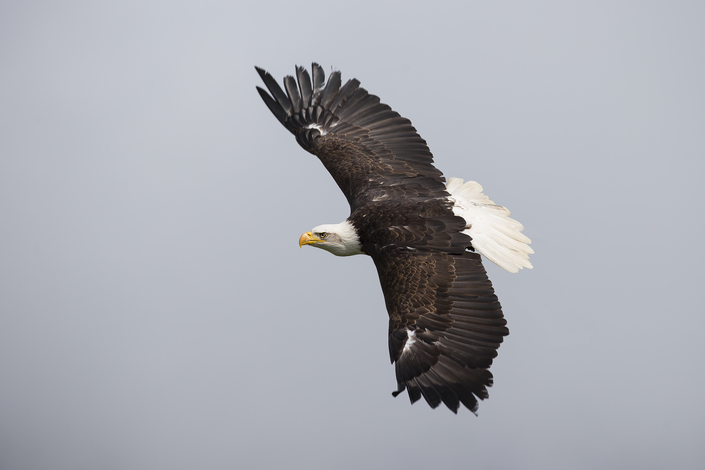
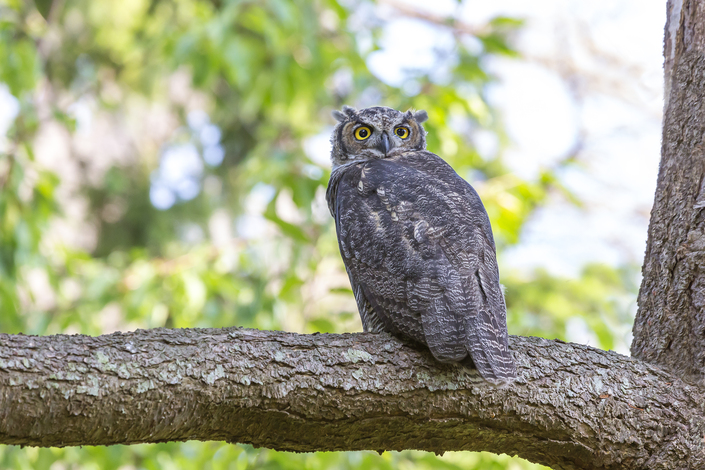
At night in the late fall and early winter it is common to hear Great-horned Owls (Bubo virginianus) calling in the woods on Grouse Mountain. These forest dwelling owls are one of the earliest-of-the-year breeding avian species. They will mate early and often by February the chicks are hatching. Their call has a distinctive pattern sounding like "who's-awake-me-too" - in hoots of course! The females will lay 1-4 eggs each year and after 35 days (average) of incubation the chicks hatch. They will then spend the next 40 days in the nest being fed by the parents before beginning to follow them out for hunting practice. The Great-horned owl is nocturnal and spends all of it's active time during the night. They are fierce predators and often attack prey that outweigh them and are notoriously known as one of the few predators willing to hunt skunks!
The Sooty Grouse (Dendragapus fuliginosus) is the namesake bird of 'Grouse' Mountain. These birds in habit the sub alpine slopes all over the North Shore of Vancouver. Previously this species, along with the Dusky Grouse, were considered one species known as Blue Grouse. Recently Ornithologists (bird scientists) split the Blue Grouse species in two as DNA evidence showed they were more removed from each other as previously thought. Sooty Grouse inhabit the western slopes of BC closest to the ocean. The males will make deep booming calls from the tree tops to attract females and once the females notice them they will do elaborate breeding displays, strutting around scratching the ground, turning in circles, flaring out their neck feathers to reveal a corrugated yellow skin patch underneath. It is an everyday event to hear the male Grouse calling in the spring on Grouse Mountain. In the mid-summer we also often see mom leading out anywhere from 4-12 chicks!
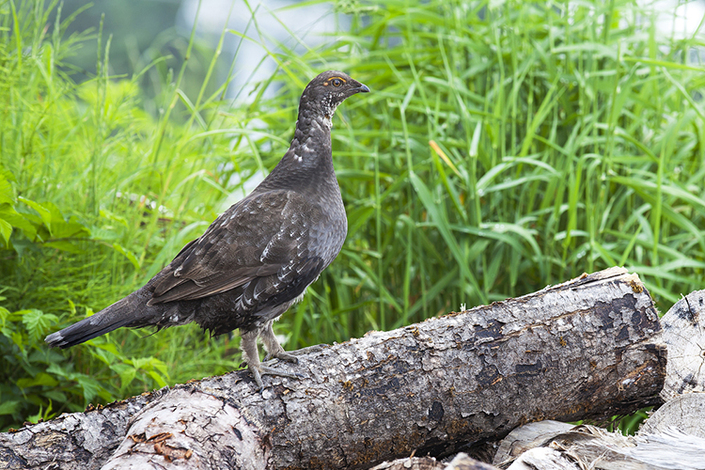
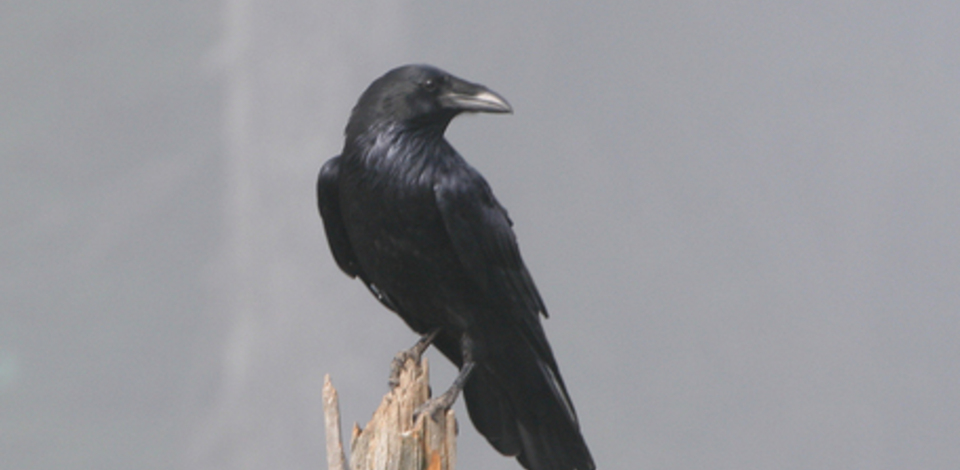
The Common Raven (Corvus corax) is a common site on Grouse Mountain. These large birds look all black in colour but upon closer inspection can be seen to have a purple sheen to their feathers as well. You can tell a Raven from a Crow by it's much larger size, much larger bill, spade shaped tail and location - Ravens are often found in mountainous regions while Crows spend their time in Urban and Rural areas near towns. Raven's also have a much deeper call than the nasally caw of the crow. Ravens are scavengers and will feed on leftover kills from predators such as bear and coyotes or birds of prey. They will also forage for berries, nuts and insects. Ravens are one of the most intelligent avian species and have been known to have hundreds of different nuances to their calls and communications.
Steller's Jays (Cyanocitta stelleri) are another member of the corvid family (same as the Common Raven) that inhabit Grouse Mountain year round. They are also the provincial bird of British Columbia. Often mistaken for Blue Jays (their Eastern cousins) by tourists, these jays can be seen doing their characteristic two legged hop around the ground or in the trees. They are foragers who search for seeds, berries and insects around the trees. They spend the late summer and fall months caching food around their habitat, often covering it up with leaves or brush, for retrieval during the winter months when resources are scarce. They have an incredible memory for remembering the locations of their caches. If you leave near the forests of Vancouver you can easily attract Jays to your yard with suet or nut feeders.
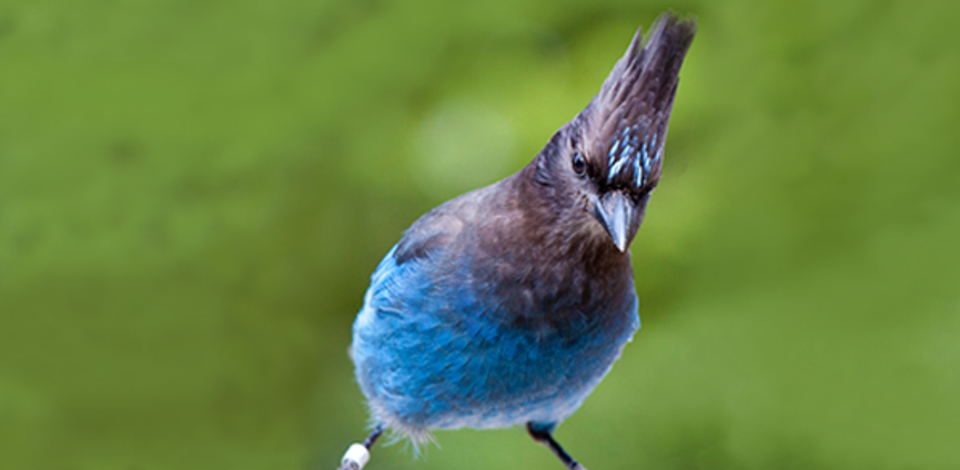
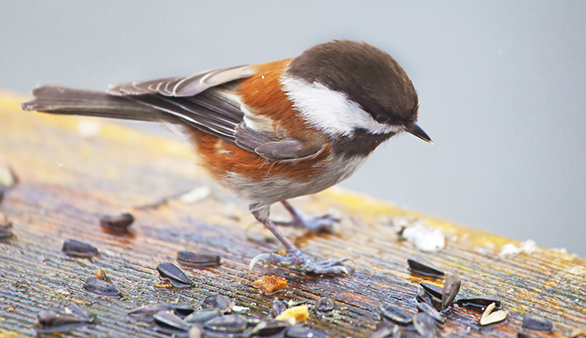
Last but not least (except in size!), we feature the Chestnut-backed Chickadee (Poecile rufescens). This small but talkative bird is found in coniferous forests around coastal BC including here at Grouse Mountain. They are related to the Black-capped Chickadees that are a common visitor in the city and suburbs around Vancouver. They get their name from their bright brown coloured back and sides. Their favourite food is insects and about 60-70% of their diet is made up of foraging for small bugs and spiders on the trees, ground litter or rotting wood. They will often start down low and then forage their way up a tree or shrub. Often in the winter months these birds will form multi-species flocks with other small birds such as nuthatches, kinglets and creepers for protection.
